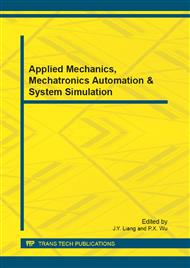p.876
p.880
p.885
p.889
p.894
p.899
p.905
p.911
p.917
Analytical Solution for the Subsurface Flow Wetland Model
Abstract:
In this paper, the subsurface flow wetland sewage treatment mathematical model is studied. the analytical solution is obtained by using the Laplace transform technique for non-steady subsurface flow wetland model and the diffusion characteristics for some parameters used in the model are analyzed. Then the solution for the model which is added by the source is obtained on two boundary conditions by the adomian decomposition method. The examples are given compare the approximate solution and the exact solutions.
Info:
Periodical:
Pages:
894-898
Citation:
Online since:
September 2012
Authors:
Price:
Сopyright:
© 2012 Trans Tech Publications Ltd. All Rights Reserved
Share:
Citation:


